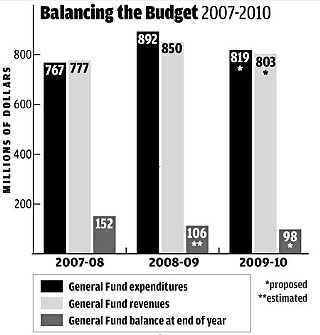What Will New AISD Budget Mean About Next Year's?
After struggles over staff pay, the budget is ready – and Carstarphen's ready to look to the future
By Richard Whittaker, Fri., Aug. 28, 2009
The Austin Independent School District has a new budget and, if it keeps to current predictions, will still have $98 million in its general revenue fund balance next year. But the real cost may be an unusually divided board of trustees.
On Aug. 24, the board approved $819 million in expenditures for the 2009-10 academic year. That figure has drifted downward since June 15, when staff presented an $865 million plan, but so has anticipated revenue, shrinking from $843 million to $803 million. In part, savings came from implementing recommendations from the controversial MGT of America efficiency study (see "AISD 'Efficiency' Study: Not Exactly What the Doctor Ordered?," June 12), but changing rules about recapture – the money the district sends to the state – have altered underlying calculations. Departing interim Chief Financial Officer Steve West explained, "We get significantly less from the state, and we also send away less." West called it "the 'checks pass in the mail' effect," as the changes effectively cancel each other out.
It's a transition budget, passed under Superintendent Meria Carstarphen but originating from her predecessor, Pat Forgione. As such, Carstarphen told trustees, "It's not anywhere close to what I would want in my first budget if I had been able to work throughout the year." The single most contentious component was pay raises. Last session the Legislature passed House Bill 3646, mandating a $950-a-year pay increase for teachers, librarians, counselors, and speech pathologists. That raise – between 2.5% and 3.5% depending on salary – would cost $9.2 million a year, and the state provided an extra $12 million to cover that. In the spirit of equity, the district passed a 3% pay raise for administrators and classified (i.e., nonteaching) staff, which includes custodians and bus drivers. That's an extra $4.5 million a year not included in the state mandate. Board Vice President Vince Torres lamented, "The Legislature did us no favors by passing a pay increase for some employees and not funding it for others."
Defining "equity" led to a split in the board. Torres, who wanted to reduce the budgetary impact by not giving raises to well-paid administrators, argued that equity can't mean retaining current disparities, and trustee Sam Guzman noted, "3 percent to someone who makes $90,000 is very different to someone who makes $19,000." But trustee Karen Dulaney Smith countered that equity means everyone, and ignoring any employee contradicts the district's principles.
This disagreement led to a confusing back and forth: While the teacher pay raise received rubber-stamp unanimous approval, the motion to reward classified and administrative staff split in two and saw revotes and multiple parliamentary enquiries. Ultimately, the classified raise passed 9-0, while the administrators' pay hike was approved 7-0 (Torres and Guzman abstained). Education Austin President Louis Malfaro supported the pay raise and suggested that the nonmandateda component was an easy sell – because his members made it cost-neutral. "We saved them about $4 million by switching from our old HMO [Health Maintenance Organization] health insurance plan to a new PPO [Preferred Provider Organization]," he said.
If the current budget cycle has been tough, the next one could be brutal. With no new state revenue anticipated and trustees increasingly disheartened about holding a successful tax rollback election before the economy recovers, revenue may stagnate. That means that, at current spending, the district could be looking at a $15 million to $25 million deficit next budget. By approving even a modest pay increase, Carstarphen warned the board, next time "everyone has to put their skin in the game."
Doing so won't be as simple as just implementing the MGT report wholesale. Some recommendations were built in to the current budget, and others are under review, but the administration and board vocally oppose several big-ticket items, such as ending field trips. Carstarphen and the board agree that the first target next year has to be a balanced budget but one that still meets the district's priorities. Those priorities may be about to change with the district's next big project: developing a new five-year strategic plan. AISD planning supervisor Joey Crumley said, "We're talking about the big-picture priorities."
To that end, the district is reviewing best practices at peer districts nationwide. There's been a series of community conversations held with Austin Voices for Education and Youth and the E3 Alliance, with plans for more in September and October. The results of that consultation process will go to a superintendent's task force, which will produce a draft before the end of the year. But before that plan is finished, Carstarphen wants the district well into the ground game for the next budget, with preliminary planning in mid-September and new systems to give real-time budget tracking. Said board President Mark Williams: "Meria realizes there's no rest for the weary."
Got something to say on the subject? Send a letter to the editor.











